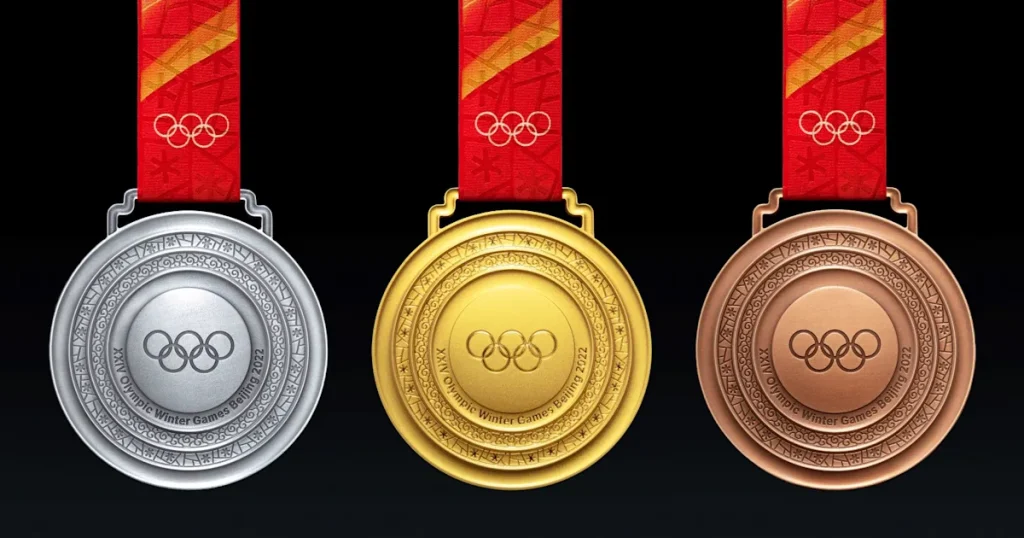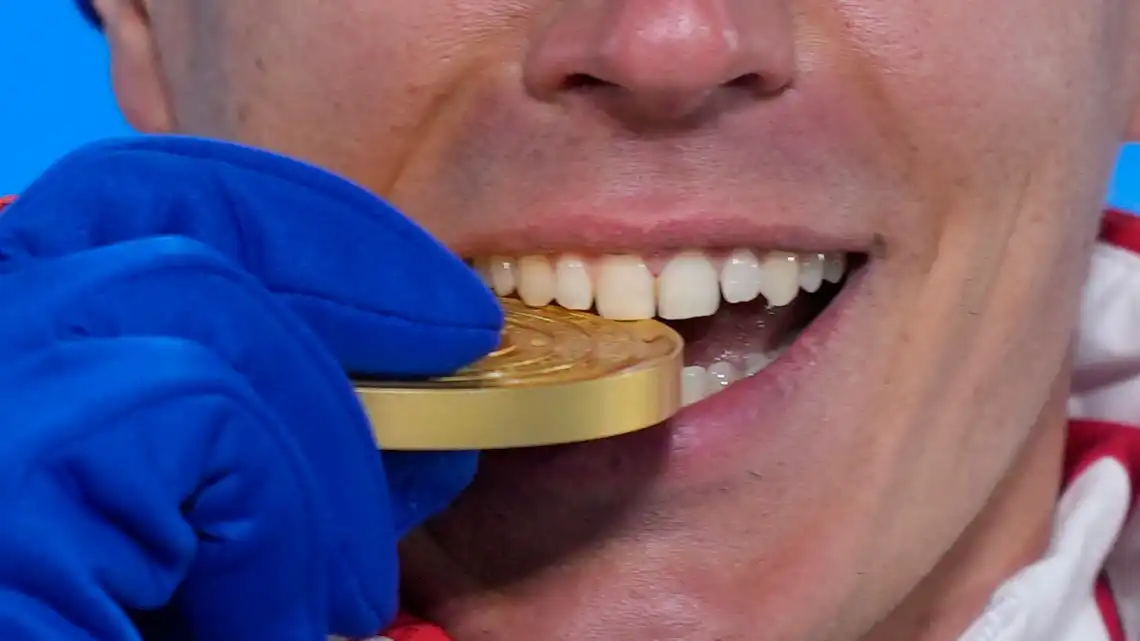Why Olympic Athletes Bite Their Medals
With Team India crossing the 100-medal mark for the very first time in Asian Games history, let us celebrate by discussing why triumphant athletes proudly bite their gold medals during the award ceremonies. Have you ever wondered why this peculiar tradition exists? Let’s unveil the intriguing history and reasons behind this unusual practice.

A Touch of Authenticity:
The tradition of athletes biting their medals has a historical origin. In ancient times, people often bit into precious metals like gold and silver to check their authenticity. Biting the medal became symbolic, signifying that the winner was receiving a genuine, valuable prize.
Curious Beginnings:
The act of biting medals at the Olympics is relatively recent. It started during the 1992 Barcelona Olympics. Before that, athletes posed with their medals without the iconic bite. The gesture gained popularity when photographers encouraged athletes to engage in this playful act, adding a touch of personality to the otherwise formal ceremony.

Capturing the Moment:
The biting tradition has become a beloved part of Olympic celebrations. Athletes do it with fun and excitement, often at the request of photographers who want to capture a candid, unique moment. It adds a human touch to their remarkable achievements, making them more relatable to fans worldwide.

Symbol of Achievement:
Biting the medal has also come to symbolize the years of hard work, dedication, and sacrifices athletes endure to reach the pinnacle of their sports. It’s a moment of pure joy, and biting the medal showcases their pride in their accomplishments.

The Modern Perspective:
In today’s digital age, the iconic image of an athlete biting their gold medal has become instantly recognizable. It’s a gesture that transcends language and culture, universally representing victory and excellence.

In conclusion, the tradition of Olympic athletes biting their gold medals might have originated from a practical need, but today, it stands as a symbol of authenticity, achievement, and celebration. It’s a fun, quirky ritual that adds character to the Olympic Games and immortalizes the joyous moments of victory.
For more interesting articles, please visit www.kidzherald.com





